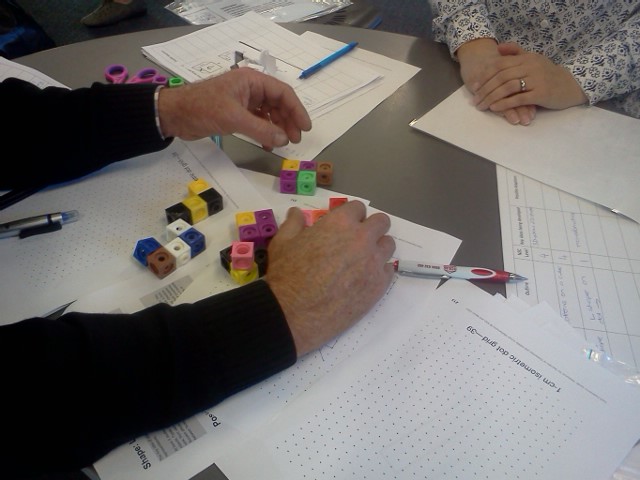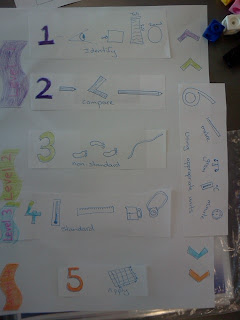First day of school and it’s a teacher only day. I’m not
being paid for it but I need the PD.
The maths advisers from Te Toi Tupu came to school. We
discussed Geometry and the teaching of measurement.
As a reliever visiting each class a couple of times a term I
found this session amazingly helpful.
Taking a strand like this into the classroom is going to be so much
easier than trying to teach number knowledge or strategy. The planning and
delivery of those to are very specific, targeted to small groups and individuals
and a there is a lot of room for error as I found last Monday.
So bring on the teaching of Strand is what I say.
The sessions and activities are very ‘discovery’ orientated,
with practical activities and the opportunities presented to students to ‘figure
it out’ themselves.
Identify
The first step in the measuring process is
understanding that objects have attributes that can be measured. Initial
experiences are needed to develop awareness of the attribute and to introduce
the necessary language, for example, big, heavy, tall, empty.
Compare and Ordering
When students are aware of the attribute
being investigated they should be given opportunities to compare different
objects. Adults realise that to say something is "long" does not have
a lot of meaning. "Longer than what?" is a usual response.
Non-standard units of measure
Some form of unit needs to be used if a
question such as "How much longer is your pencil than mine?" is
asked. Non-standard units are ordinary objects which are used because they are
known to students and are readily available, for example, paces for length,
books for area and cups for volume.
Standard
Some form of unit needs to be used if a question
such as "How much longer is your pencil than mine?" is asked.
Non-standard units are ordinary objects which are used because they are known
to students and are readily available, for example, paces for length, books for
area and cups for volume.
Applying
When students are comfortable and efficient
in measuring and estimating using appropriate standard units, learning
experiences can be directed towards applications of measurement and to the use
of measurement formulae.
6.
Using appropriate units
SI Units used in school measurement
Length
|
metre
(m)
|
Area
|
square
metre (m2)
|
Volume
|
cubic
metre (m3)
|
Mass
|
gram
(g)
|
Time
|
second
(s)
|
Non SI units
Time
|
minute
(min) hour (h)
|
Angle
|
degree
of plane angle (O)
|
Temperature
|
degree
Celsius (OC)
|
Resources:

